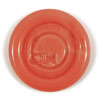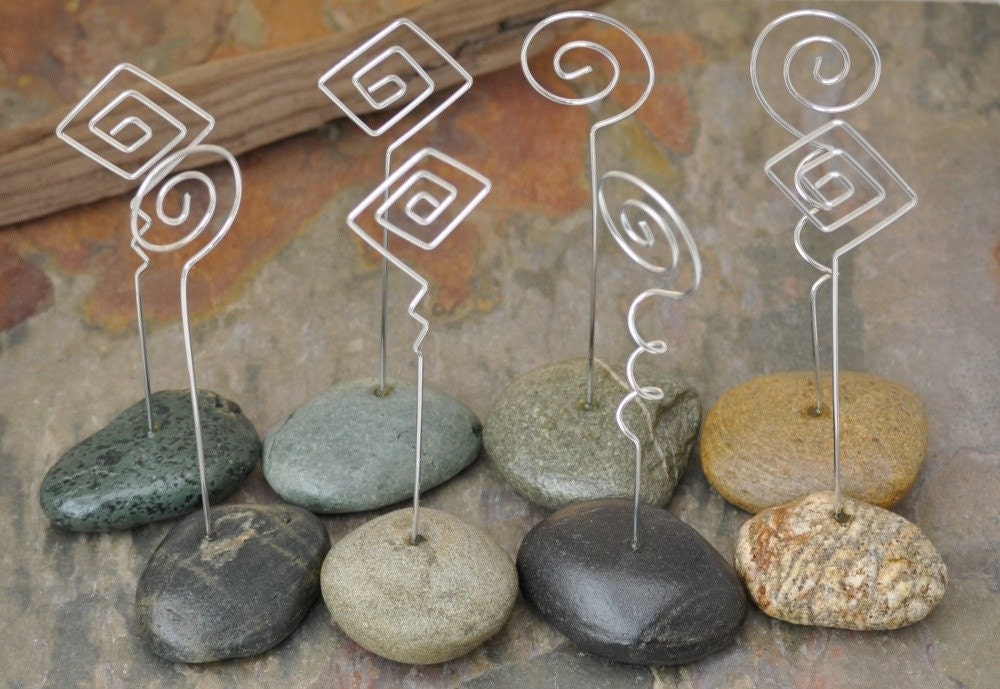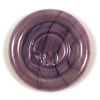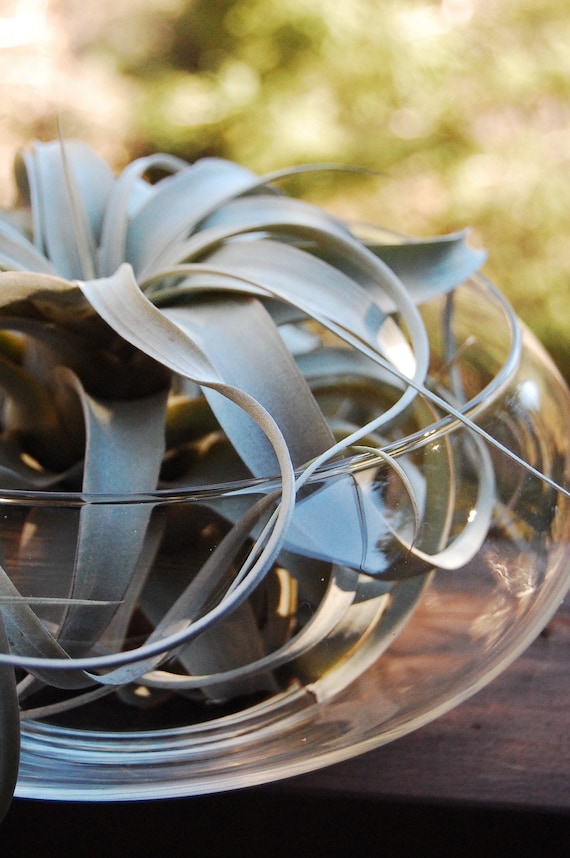
These pictures show simple spacers made from Phoenix, some I have struck and some I have left unstruck for comparison. For the beads that I struck, I allowed them to cool outside of the flame until they lost their glow and introduced them to the top flame again to bathe them in gentle heat. The colour of the struck beads is a rich soft orange opaque which was easy to achieve with a single strike. I am intrigued by the large variation in colour that can be seen in these images though comparing the struck and un-struck beads. I think that Phoenix would be an exciting glass to use for sculptural creations.


I made these sweet and simple little spacer beads from CiM Ginger. One of the larger beads has dots of silvered ivory stringer (sis) too. The fine silver leaf used to create the organic patterns and striations in the Effetre ivory stringer have not fumed or reacted with the base of Ginger at all which tells me that it would be a great glass to use if you were looking for a light and neutral non reactive base glass for your bead design.

This lovely necklace uses both struck and unstruck Phoenix with Ginger spacers to show a progression in both colour and tone. I have etched the surface of my spacers to compliment the wonderful hand crafted terracotta feature button by Tan Grey of
tanofcourse. The bead and button elements have been tied together with a sumptuous sugar pink hand dyed silk ribbon by Diane Turton of
SowZerE Designs. This necklace is a gift for a good mate of mine for Christmas, hope she likes it.

The last of my Ginger, Phoenix and terracotta Tan button creations is this bracelet in three parts. The gorgeous copper toggle and findings were made by George Harper who kindly put an all copper bracelet findings kit together for me.
I had never tried chain maille techniques before and so spent an informative afternoon browsing the fantastic
M.A.I.L. (maille artisans international league) database for inspiration.

Jolene
Kitzbitz


 It was lovely to log in to Etsy today and see a message there to let me know my work had been featured. It is such a thrill when that happens. A big thank you to Aimee of Aimees Rock Works for putting my Sleeping Beauty beads in her glittery, girly, magpie’s dream of a gallery.
It was lovely to log in to Etsy today and see a message there to let me know my work had been featured. It is such a thrill when that happens. A big thank you to Aimee of Aimees Rock Works for putting my Sleeping Beauty beads in her glittery, girly, magpie’s dream of a gallery. 




 These pictures show simple spacers made from Phoenix, some I have struck and some I have left unstruck for comparison. For the beads that I struck, I allowed them to cool outside of the flame until they lost their glow and introduced them to the top flame again to bathe them in gentle heat. The colour of the struck beads is a rich soft orange opaque which was easy to achieve with a single strike. I am intrigued by the large variation in colour that can be seen in these images though comparing the struck and un-struck beads. I think that Phoenix would be an exciting glass to use for sculptural creations.
These pictures show simple spacers made from Phoenix, some I have struck and some I have left unstruck for comparison. For the beads that I struck, I allowed them to cool outside of the flame until they lost their glow and introduced them to the top flame again to bathe them in gentle heat. The colour of the struck beads is a rich soft orange opaque which was easy to achieve with a single strike. I am intrigued by the large variation in colour that can be seen in these images though comparing the struck and un-struck beads. I think that Phoenix would be an exciting glass to use for sculptural creations.
 I made these sweet and simple little spacer beads from CiM Ginger. One of the larger beads has dots of silvered ivory stringer (sis) too. The fine silver leaf used to create the organic patterns and striations in the Effetre ivory stringer have not fumed or reacted with the base of Ginger at all which tells me that it would be a great glass to use if you were looking for a light and neutral non reactive base glass for your bead design.
I made these sweet and simple little spacer beads from CiM Ginger. One of the larger beads has dots of silvered ivory stringer (sis) too. The fine silver leaf used to create the organic patterns and striations in the Effetre ivory stringer have not fumed or reacted with the base of Ginger at all which tells me that it would be a great glass to use if you were looking for a light and neutral non reactive base glass for your bead design. This lovely necklace uses both struck and unstruck Phoenix with Ginger spacers to show a progression in both colour and tone. I have etched the surface of my spacers to compliment the wonderful hand crafted terracotta feature button by Tan Grey of tanofcourse. The bead and button elements have been tied together with a sumptuous sugar pink hand dyed silk ribbon by Diane Turton of SowZerE Designs. This necklace is a gift for a good mate of mine for Christmas, hope she likes it.
This lovely necklace uses both struck and unstruck Phoenix with Ginger spacers to show a progression in both colour and tone. I have etched the surface of my spacers to compliment the wonderful hand crafted terracotta feature button by Tan Grey of tanofcourse. The bead and button elements have been tied together with a sumptuous sugar pink hand dyed silk ribbon by Diane Turton of SowZerE Designs. This necklace is a gift for a good mate of mine for Christmas, hope she likes it.

 Poi is a beautiful muted dark lilac. Either which way, this colour is lush.
Poi is a beautiful muted dark lilac. Either which way, this colour is lush.


 I have been working very hard to improve my photography and product presentation over the last few months and it is such a lovely treat to find yourself (or rather, your work) chosen and featured in an Etsy treasury by a fellow Etsian. A big thank you to Michelle Madonna of plantology for putting my seaglass beads front and center in her beautiful treasury.
I have been working very hard to improve my photography and product presentation over the last few months and it is such a lovely treat to find yourself (or rather, your work) chosen and featured in an Etsy treasury by a fellow Etsian. A big thank you to Michelle Madonna of plantology for putting my seaglass beads front and center in her beautiful treasury. 
